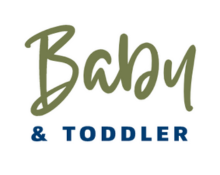
A breast abscess is a localized collection of pus within the breast tissue. It is a rare complication of mastitis that can occur when the infection is not properly treated or resolved. Here are some important points to know about a breast abscess in the context of breastfeeding:
Symptoms: The symptoms of a breast abscess may include a painful, swollen, and reddened area of the breast that may feel warm to the touch. You may also experience flu-like symptoms such as fever, chills, and fatigue. There may be a visible fluctuant mass or a tender lump in the breast. If you suspect you have a breast abscess, it is important to seek medical attention promptly.
Treatment: Treatment of a breast abscess usually involves a combination of antibiotics and drainage of the abscess. Antibiotics are prescribed to treat the underlying infection. In some cases, the abscess may need to be drained by a healthcare professional. This can be done through a needle aspiration or by making an incision to allow the pus to drain. In some instances, a small catheter may be inserted to facilitate ongoing drainage.
Continuing to breastfeed: In most cases, it is recommended to continue breastfeeding or pumping from the affected breast despite the presence of a breast abscess. It can help in draining the breast and may facilitate healing. The milk from the affected breast is safe for the baby, as long as the abscess is properly treated and appropriate precautions are taken. However, it is essential to follow the guidance of a healthcare professional in terms of any temporary modifications to breastfeeding or pumping routines during the treatment period.
Pain relief and comfort measures: To manage pain and discomfort associated with a breast abscess, over-the-counter pain relievers such as acetaminophen or ibuprofen may be recommended by your healthcare provider. Applying warm compresses to the affected area before breastfeeding or pumping can help with milk flow and alleviate discomfort. It is important to follow your healthcare provider’s instructions and any prescribed medications for pain management.
Follow-up care: After the treatment of a breast abscess, it is crucial to continue close monitoring and follow-up with your healthcare provider. They may recommend additional antibiotics, further drainage if necessary, or further evaluation to ensure complete resolution of the abscess. Regular follow-up visits can help prevent complications and ensure proper healing.
If you suspect you have a breast abscess or have any concerns related to breastfeeding and breast health, it is important to consult with a healthcare professional or a lactation consultant. They can provide accurate diagnosis, appropriate treatment, and guidance specific to your situation.
